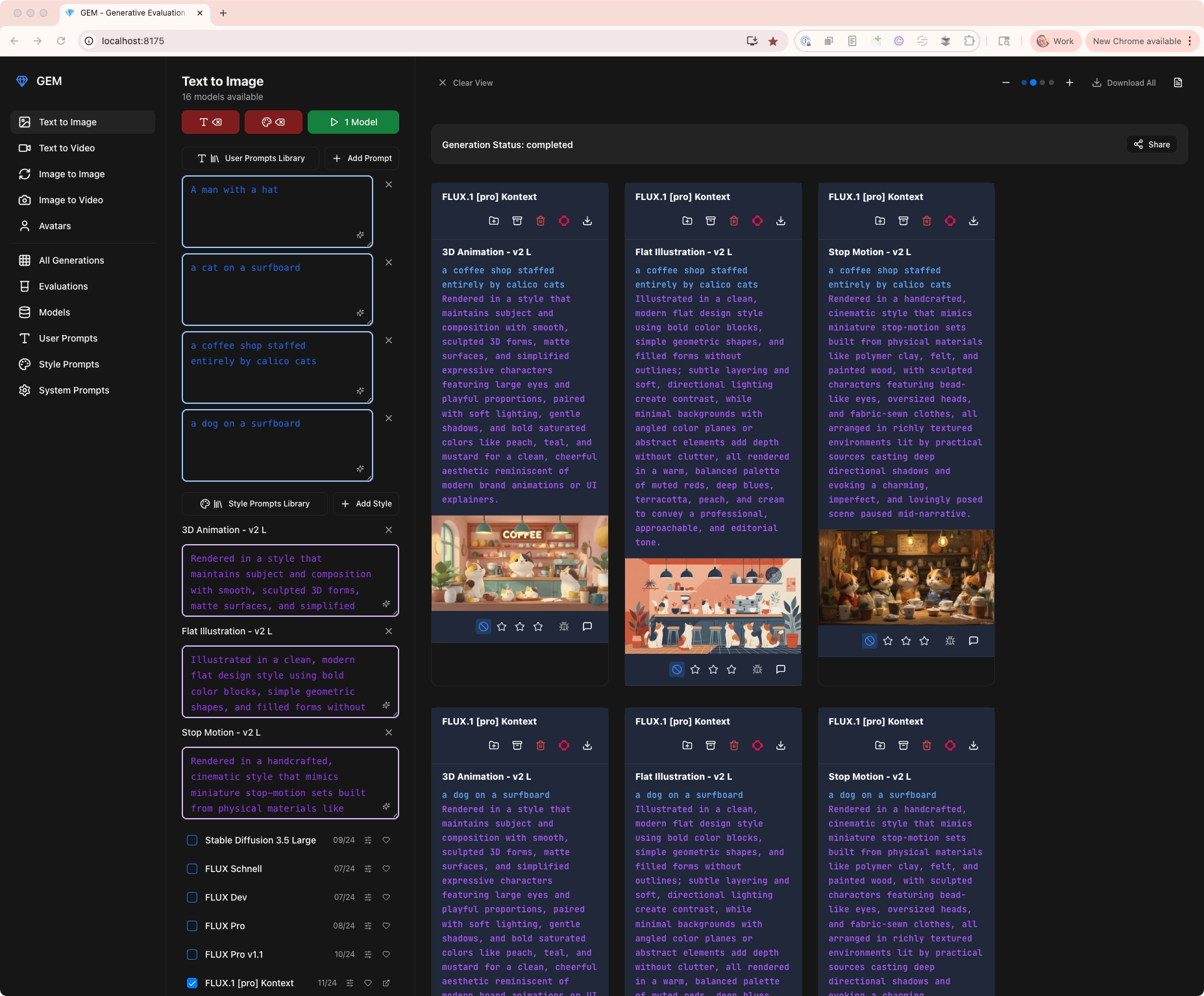What type of content do you primarily create?




Noel Cornell is a software QA engineer at Descript who found himself in a very 2025 predicament: drowning in AI-generated images that needed human eyeballs for quality control.
A QA engineer’s job is to test software to make sure it works before it gets to users. In Noel’s case that means testing new generative media features—think AI-created images and videos with different artistic styles (at Descript, we use different AI models for different functions, so whatever you’re doing, you’re using the model that’s best at it).
Every time a new AI model drops (which, in this space, happens roughly every Tuesday), someone needs to test whether it actually works well in Descript, using some existing style prompts—the behind-the-scenes instructions that make your cat photo look like a Renaissance painting or a cyberpunk fever dream. And not only do they need to test the new model; they also have to run the same prompt through all the other models that are out there, so we can be sure we’re choosing the best one.
The old process involved writing scripts (using ChatGPT) that would automatically enter the prompt across multiple models; Noel had to copy-paste the scripts into his terminal, then manually evaluate results one by one. Effective? Sure. Time-consuming? Very. Soul-crushing? Absolutely.
What he longed for was an app or some software built for his specific need—and Noel didn't have the coding background to build it himself.
But, he thought, he could probably vibe code it.
If you can describe it, you can build it
Noel's breakthrough came during his daily walk to the gym. Instead of listening to a podcast or music, he opened ChatGPT's voice mode and started telling it about the tool he wished existed. For 15 minutes he talked through ideas about batch processing, user interfaces, and collaborative evaluation workflows, his legs propelling him down the sidewalk all the while.
"There's something kind of clarifying about your body doing something and your mind doing something else," he said. "The ability to speak extemporaneously and go off on tangents has been really wonderful."
By the time he reached the gym, he'd have a rough product requirements document (PRD)—essentially a blueprint for what he wanted to build. This step didn’t require any coding, just clear thinking translated into clear requests.
Carving a GEM
Back home post-workout, Noel took his voice-brainstormed PRD and dropped it into Cursor (an AI-powered code editor), asking it to build the Generative Evaluation Manager. What emerged wasn't just a script, but a full web application with a graphical interface that could:
- Generate hundreds of images and videos in batch
- Apply multiple AI models and style prompts simultaneously
- Let team members collaboratively rate outputs with a simple 1-3 star system
- Store everything permanently (because AI services all have different policies for how long they keep your files)
- Flag problematic generations with a "bug" indicator for further discussion

The numbers speak for themselves: Noel recently ran a test generating 364 images using his GEM. "Manual evaluations at this scale would likely be infeasible without a tool like this," he says, with very engineer-like understatement.
Building for others
Noel's story goes beyond simple automation. He didn't just solve his own problem—he built something his entire team could use.
"I can go off and build a lot of different tools to solve problems of my own," he explains, "but there's an impact to making things with AI that really lets you take things to the next level. You can think about building tools that other people can use also."
This collaborative aspect matters because AI testing isn't like traditional software testing. Regular software is deterministic—push the button, get the same result every time. AI models are probabilistic—push the button, get something like what you expected, but with creative variations that require human judgment.
"Every single model has different characteristics," Noel explains. "You have to have some sort of background on how you're prompting the model specifically. And that varies by model."
Why this matters beyond Descript
Noel's experience shows a broader shift happening across the tech industry. The traditional pipeline of "have idea → learn to code → build thing → use thing" is compressing into "have idea → articulate idea clearly → partner with AI → use thing."
But it's not just about the democratization of coding (though that's significant). It's about the psychological shift from “I can’t do that” to “let me try that.”
"We're all used to walking around killing these ideas very early in our minds," Noel said. "You have the idea and you immediately dismiss them outright as being impossible to do."
Even for someone who's been deep in AI since early 2023, the vibe coding revelation felt transformative: "In the last few months, I felt like there's another level of awakening that I'm having with regards to the potential of this stuff," Noel said.
Keeping up with the pace of progress
While Noel was solving his immediate problem—how to test AI models efficiently—he was also addressing a fundamental challenge facing any company building with AI: the pace of change is absolutely relentless.
"There's new models coming out literally on a daily basis," he said. "The state of the art for what's best changes even faster than just general AI."
Traditional development cycles can't keep up with this pace. But tools like GEM, built by domain experts who understand the actual problems, can adapt as quickly as the underlying technology changes.
Noel's next goal? Getting GEM hosted on Descript's backend so it becomes a permanent part of the company’s development infrastructure. He's also created templates for other employees who want to try vibe coding their own internal tools.
The bottom line
Noel didn't just build a tool—he went from "I wish this existed" to "this exists now." In a world where AI capabilities are expanding faster than traditional development can accommodate, that’s becoming an incredibly valuable skill.
Plus, he turned a 364-image evaluation marathon into a simple process he proudly describes as working "flawlessly." For anyone who's ever been trapped in repetitive, manual work while knowing there has to be a better way, that’s the dream scenario.
The future belongs to people who can clearly articulate problems worth solving. The ability to code the solutions might be optional.























%201.svg)





